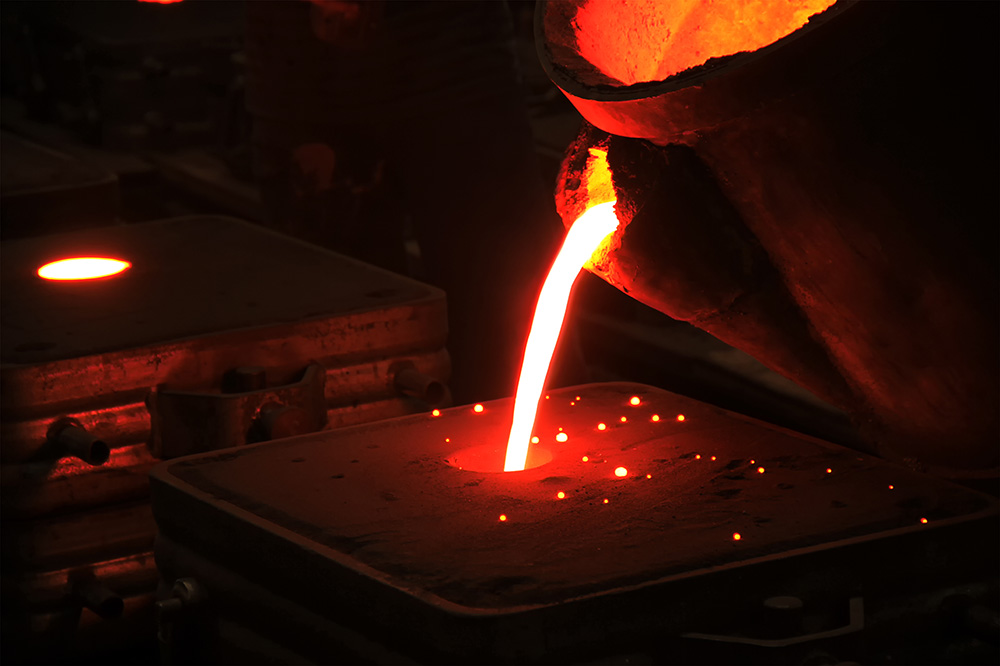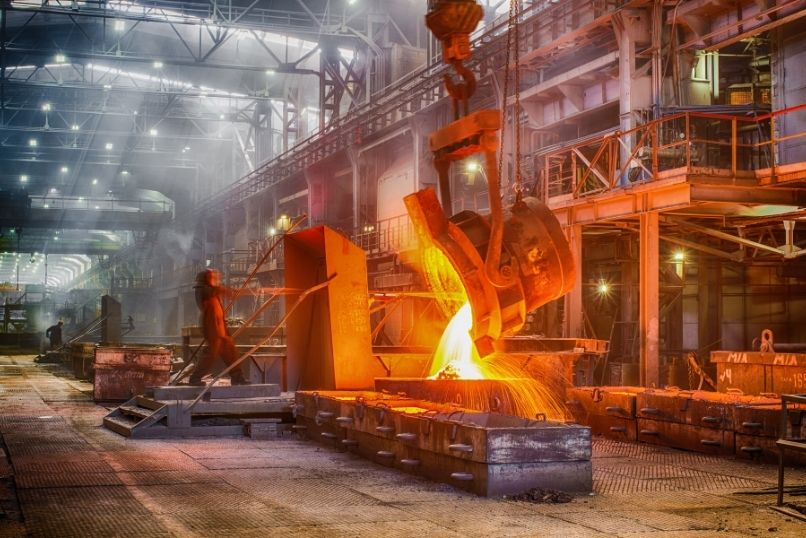What makes Wisconsin Aluminum Foundry a top-rated name in casting services
The Role of Metal Casting in Advancing Production Technologies
Metal Casting have notably affected the advancement of producing technologies. They offer unique design versatility, allowing the production of intricate geometries vital for various applications. Modern casting techniques are being improved by innovations like 3D printing and automation. These developments not only improve performance however additionally address difficulties in precision and sustainability. As sectors continue to advance, the role of Metal Casting stays vital in shaping their future. What exists ahead in this vibrant area?
The Evolution of Steel Casting Strategies
As the demand for precision and efficiency in manufacturing has grown, the evolution of Metal Casting methods has undertaken considerable makeover. Historically, Metal Casting began with easy methods such as sand casting and lost-wax casting, which enabled craftsmens to create complex forms. In time, developments in technology presented procedures like die spreading and investment spreading, improving precision and lowering waste. Aluminum Castings. The introduction of computer-aided style (CAD) and simulation software application changed the drawing board, enabling suppliers to anticipate possible problems and maximize styles before production. Additionally, the development of new materials, such as advanced alloys and compounds, has widened the range of applications for Metal Casting. Automation and robotics have more refined spreading processes, boosting uniformity and efficiency. As an outcome, the Metal Casting sector has adjusted to meet the needs of modern production, concentrating on sustainability and innovation to continue to be competitive in an ever-evolving market
Applications of Metal Casting in Key Industries
The improvements in Metal Casting strategies have opened a large array of applications across different sectors. In the vehicle market, Metal Casting are important for generating engine blocks, transmission real estates, and other crucial parts that need high toughness and longevity. The aerospace sector uses castings for complex parts like generator blades and structural components, making sure light-weight yet durable solutions for aircraft.

The building and construction industry uses Metal Casting for architectural elements such as beams and installations, contributing to the honesty of buildings and framework. In the power field, spreadings play an essential role in making parts for wind generators and power generation equipment, enhancing efficiency and integrity. Additionally, the medical area benefits from accuracy castings used in medical tools and prosthetics, demonstrating the adaptability of Metal Casting across varied applications. This broad usage underscores the significance of Metal Casting in modern-day production techniques.
Benefits of Metal Casting in Modern Manufacturing
Metal Casting use countless advantages that considerably improve modern manufacturing processes. One vital advantage is style flexibility; Metal Casting enables the creation of complicated shapes and intricate geometries that are often challenging or difficult to achieve with other producing techniques. This ability makes it possible for manufacturers to optimize product layouts for functionality and efficiency.
Additionally, Metal Casting can support a variety of products, including steel, iron, and aluminum, which can be tailored to fulfill certain mechanical residential properties and rust resistance requirements.

Cost-effectiveness is one more noteworthy advantage; Metal Casting procedures can generate Web Site big quantities of get rid of minimal product waste, thus lowering manufacturing costs.
The resilience of actors metal elements adds to the long life of products, decreasing the demand for regular replacements. On the whole, the benefits of Metal Casting considerably add to effectiveness, index sustainability, and innovation within modern-day production atmospheres.
Technologies Driving the Future of Metal Casting
While standard Metal Casting techniques have offered the market well for decades, current technologies are poised to change the area. Advances such as 3D printing innovation permit fast prototyping and the manufacturing of complex geometries that were previously unattainable. These technologies not just boost design adaptability however additionally decrease waste and reduce preparations. On top of that, the integration of automation and robotics in casting processes is streamlining operations, boosting accuracy, and boosting worker security. The growth of new alloys and composite materials is allowing the development of stronger, lighter spreadings tailored for details applications. Digital innovations, consisting of expert system and artificial intelligence, are enhancing casting parameters and anticipating upkeep, driving improved top quality control. Jointly, these technologies are pushing the boundaries of Metal Casting, fostering higher effectiveness and sustainability in manufacturing, and positioning the industry for future development and competition.
Obstacles and Solutions in Metal Casting Processes
As advancements in Metal Casting technology proceed to reshape the market, numerous obstacles stay that makers need to resolve to completely utilize these innovations. One considerable issue is the variability in product residential properties, which can cause irregular high quality and efficiency. This variability often results from changes in basic materials and handling problems. Furthermore, the climbing prices of power and products position economic restrictions, pushing manufacturers to look for extra effective processes.
To battle these difficulties, companies are significantly embracing automated systems and advanced simulation strategies to enhance accuracy and consistency. Applying top quality control procedures throughout the manufacturing procedure likewise assists in spotting flaws early. In addition, purchasing research for alternative products might decrease prices and enhance sustainability. By attending to these obstacles with cutting-edge solutions, the Metal Casting industry can improve performance and useful reference keep competition in the progressing manufacturing landscape.
Often Asked Questions
What Materials Are Generally Used in Metal Casting Procedures?
Typical materials utilized in Metal Casting procedures include light weight aluminum, iron, bronze, and magnesium. Each material has distinct residential or commercial properties that provide to different applications, improving the convenience and functionality of the final actors products in various markets.
Exactly How Do Ecological Laws Effect Metal Casting Operations?
Ecological guidelines force Metal Casting operations to embrace cleaner technologies and methods, usually raising production expenses. Conformity may bring about cutting-edge processes that reduce waste and exhausts, eventually advertising sustainability within the Metal Casting market.
What Are the Safety And Security Measures in Metal Casting Facilities?
Safety and security actions in Metal Casting centers consist of appropriate ventilation, individual safety tools, routine safety and security training, equipment maintenance, and adherence to safety and security laws, making certain a secure setting for workers while minimizing dangers connected with dangerous materials and procedures.
Exactly How Is Quality Controlled in the Steel Casting Refine?
Quality assurance in Metal Casting involves extensive inspections, including aesthetic evaluations, dimensional checks, and material screening. Adherence to industry criteria and executing quality administration systems assures that castings satisfy specified requirements throughout the manufacturing procedure.
What Is the Future Job Overview for Metal Casting Professionals?
The future task overview for Metal Casting experts appears promising, driven by developments in technology and enhancing need throughout different industries (Metal Castings). Growth in automation and sustainable practices will likely develop new possibilities in this market
Historically, Metal Casting started with simple methods such as sand casting and lost-wax casting, which allowed artisans to produce complex forms. Over time, innovations in innovation presented procedures like die spreading and financial investment spreading, improving precision and reducing waste. In enhancement, the medical field advantages from accuracy spreadings made use of in medical instruments and prosthetics, showing the flexibility of Metal Casting throughout varied applications. Metal Casting supply many benefits that considerably improve contemporary manufacturing processes. Common products used in Metal Casting procedures include aluminum, iron, magnesium, and bronze.